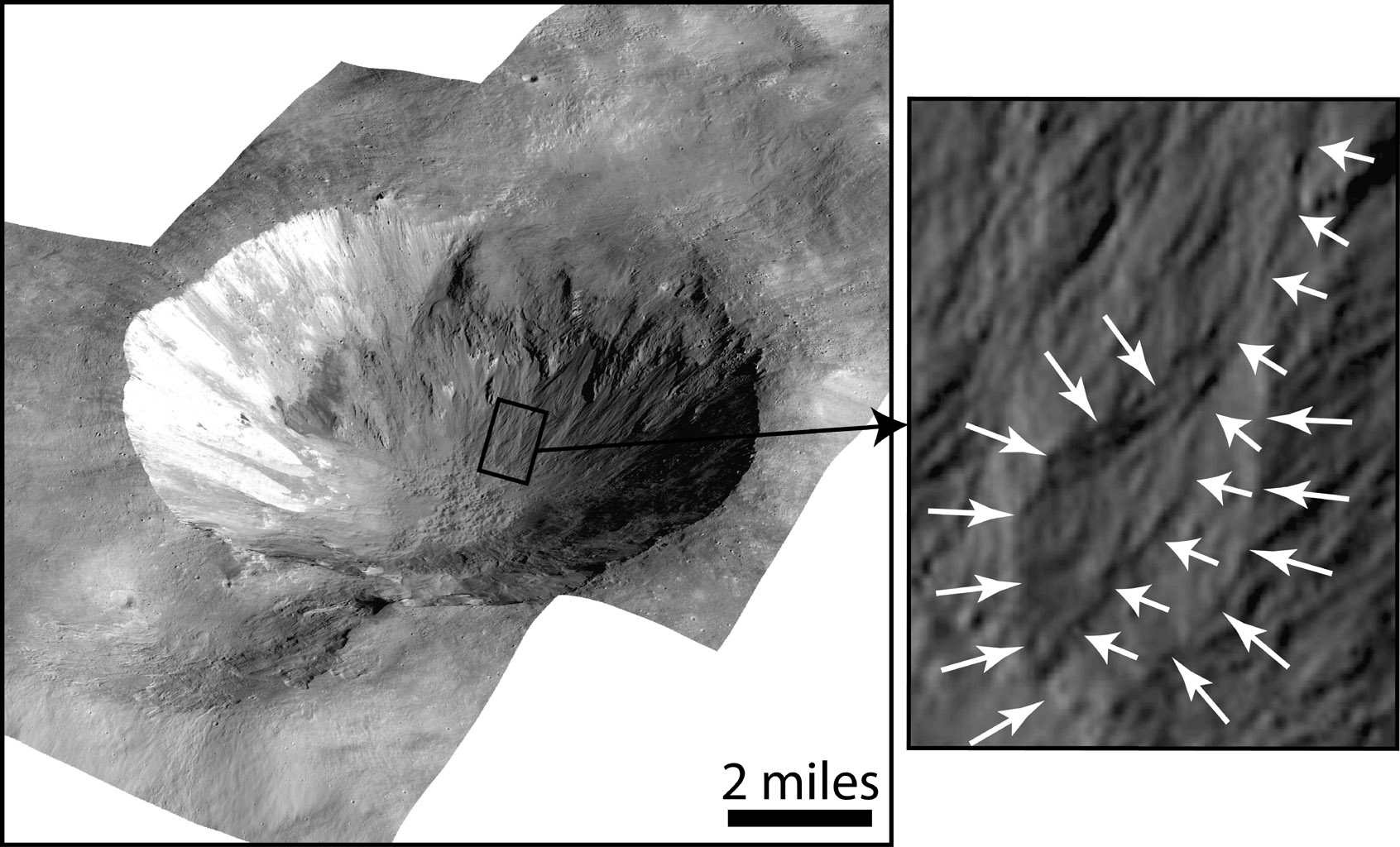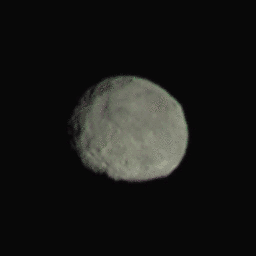boogabooga
Bug Crusher
- Joined
- Apr 16, 2011
- Messages
- 2,999
- Reaction score
- 1
- Points
- 0
Id like to know why Ceres looks so much like Umbriel
Has anyone ever seen them at the same place at the same time? :lol:
Id like to know why Ceres looks so much like Umbriel
IMO, I think it's a fresh impact crater. Aristarchus on Luna comes to mind.
It could be the Piazzi feature...

Protoplanet Vesta, visited by NASA's Dawn spacecraft from 2011 to 2013, was once thought to be completely dry, incapable of retaining water because of the low temperatures and pressures at its surface. However, a new study shows evidence that Vesta may have had short-lived flows of water-mobilized material on its surface, based on data from Dawn.
"Nobody expected to find evidence of water on Vesta. The surface is very cold and there is no atmosphere, so any water on the surface evaporates," said Jennifer Scully, postgraduate researcher at the University of California, Los Angeles. "However, Vesta is proving to be a very interesting and complex planetary body."
The study has broad implications for planetary science.
"These results, and many others from the Dawn mission, show that Vesta is home to many processes that were previously thought to be exclusive to planets," said UCLA's Christopher Russell, principal investigator for the Dawn mission. "We look forward to uncovering even more insights and mysteries when Dawn studies Ceres."
[...]







But as this most recent series of observations show, Ceres has a varied surface apparently covered in impact craters. In the dwarf planet’s south polar region, for example, a large, well formed and approximately circular impact crater can be resolved.
The mysterious bright feature that has fascinated planetary scientists is still there and slowly beginning to reveal some detail. What's more, there appears to be several more smaller bright features -- could they be indicative of ice accumulations or some subsurface mineral exposed by impacts?
[...]

Craters and mysterious bright spots are beginning to pop out in the latest images of Ceres from NASA's Dawn spacecraft. These images, taken Feb. 12 at a distance of 52,000 miles (83,000 kilometers) from the dwarf planet, pose intriguing questions for the science team to explore as the spacecraft nears its destination.
Dawn has a filter wheel like many other planetary spacecraft. The photos of Ceres so far have probably been taken through the clear filter. Dawn needs to take a composite to simulate color.I don't suppose Dawn has a color camera on it?
Ceres has a radically different color than other asteroids, but it looks almost the same with grayscale on. Like a certain Uranian moon, in fact.
With all the advances in camera technology. One would think that nasa would be able to harden an 4khd color canon camera and send it up with the craft for at least half the cost.
With all the advances in camera technology. One would think that nasa would be able to harden an 4khd color canon camera and send it up with the craft for at least half the cost.
The problems with shooting 4K video are having new technology radiation hardened, being able to transmit all the high resolution video, and the added mass from carrying an instrument whose purpose cannot be adequately justified. It already takes a significant amount of time to download non-moving images from spacecraft that are up to billions of kilometers away. There is not any scientific justification to shooting regular 4K video and it will just hurt the overall data return. The ability to return more data will come with optical communication, but shooting video in space is still not very useful.With all the advances in camera technology. One would think that nasa would be able to harden an 4khd color canon camera and send it up with the craft for at least half the cost.

These images of dwarf planet Ceres, processed to enhance clarity, were taken on Feb. 19, 2015, from a distance of about 29,000 miles (46,000 kilometers), by NASA's Dawn spacecraft. Dawn observed Ceres completing one full rotation, which lasted about nine hours.


